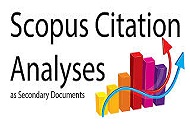Model Pewayangan Punakawan Suku Sasak di Pulau Lombok untuk Meningkatkan Empati Siswa
DOI:
https://doi.org/10.33394/jk.v2i2.460Keywords:
Model of puppet, Empathy.Abstract
cognitive and emotional as form of responses to help someone through communication. Based on the
phenomena that often occurred in the fields, there are many students who unconcerned to their friend’s
problem. Unconcern means the people couldn’t feel people’s situation and condition as a concept that involves
cognitive and emotional as form of responses to help someone, it can be categorized as low empathy. If the
problems are allowed continuously, it could be imagined that the students will be a crisis of self-awareness to
the importance of empathy to the other people which is illustrated by bad interpersonal relationship. The
solutions can be offered to improve the empathy through observed puppet learning model. In this case puppet
model is used as treatments in giving comprehension about the empathy and giving fun learning because
consist of humorous aspect. Besides that, by observing the behavior, attitudes, and emotional reactions of
puppet model is used, students are expected to make a decision what they have to do of their empathy. In this
case, it refers to the theory of social cognitive. So, person’s empathy would be created through puppet model.
References
Bandura. A. 1989. Human Agency in Social
Cognitive Theory. Journal
American Psychologist. 44. (9).
-1184.
Bickmore, T. W., Fernando, R., Ring, L., &
Schulman, D. 2009. Towards
Empathic Touch by Relational
Agents. Hungary: International
Foundation for Autonomous Agents
and Multiagent Systems
(www.ifaamas.org). All rights
reserved.
Borba, M. 2008. Building Moral
Intelligence: the Seven Essential
Virtues That Teach Kids to Do the
Right Thing. Alih Bahasa: Lina
Jusuf. Jakarta: Gramedia Pustaka
Utama.
Davis, M. H. 1996. Empathy: A Social
Psychological Approach. Boulder,
CO: Westview Press.
Hoffman, M. L. 2001. Empathy and Moral
Development-Implications for
Caring and Justice. New York:
Cambridge University Press.
Frankel, R. 1995. Emotion and the
Physician-Patient Relationship.
Journal Motivation and Emotion. 19.
-173.
Gerdes, K. E., & Segal, E. A. 2009. A Social
Work Model of Empathy. Journal
Advances in Social Work.10. (2).
-127
Gibson, S. K. 2004. Social Learning
(Cognitive) Theory and Implication
for Human Resource Development.
Journal Advances in Developing
Human Resources. 6.(2). 193-210.
Heyes, C.M. & Foster, C.L. 2002. Motor
Learning by Observation: Evidence
from a Serial Reaction Time Task.
The Quarterly Journal of
Experimental Psychology. 55A. (2).
-607.
Hinnant, J. B., & O’Brien, M. 2007.
Cognitive and Emotional Control and
Perspective Taking and Their
Relations of Empathy in 5-Year-Old
Children. The Journal of Genetic
Psychology. 168. (3). 301-322.
Hojat, M. 2007. Empathy In Patien Care:
Antecedents, Development,
Measurement, and Outcomes.
Philadelphia: Spinger.
Levenson, R. W., & Ruef, A. M. 1992.
Empathy: A Physiological Substrate.
Journal of Personality and Social
Psychology. 63. (2). 234-246.
Matsumoto, D. 2008. Culture and
Psychology. Alih Bahasa: Anindito
Aditomo. Yogyakarta: Pustaka
Pelajar.
May, R. 2010. The Art of Counseling. Alih
Bahasa: Darmin Ahmad & Afifah
Inayati. Yogyakarta: Pustaka Pelajar.
Mertosedono, A. 1994. Sejarah Wayang:
Asal Usul, Jenis dan Cirinya.
Semarang: Dahara Prize.
Mulyana, D. 2000. Suatu Pengantar Ilmu
Komunikasi. Bandung: PT Remaja
Rosdakarya.
Pedersen, P. B., Crethar, H. C., & Calson, J.
Inclusive Cultural Empathy:
Making Relationships Centeral In
Counseling and Psychoterapy.
Jurnal Kependidikan 15 (4): 359-368
Washington DC: American
Psychological Association.
Prawitasari, J. E. 2012. Psikologi Terapan
melintas Batas Disiplin Ilmu.
Jakarta: Erlangga.
Sumantri, A. A. N. 2011. Wayang Sebagai
Media Pendidikan In Formal dan
Non Formal. Aksara Sriti Jurnal
BPPNFI Regional VII Mataram.
Wilson, J. P., & Thomas, R. B. 2004.
Empathy In The Treatment of
Trauma and PTSD. New York:
Brunner Routledge.
Wunderle, W. 2006. Through the Lens of
Cultural Awareness: A Primer for
US Armed Forces Deploying to Arab
and Middle Eastern Countries.
Combat Studies Institute Press, USA.
Yusuf, S., & Nurihsan, A. J, 2008. Landasan
Bimbingan dan Konseling.Bandung:
PT Remaja Rosdakarya.
Downloads
Published
How to Cite
Issue
Section
Citation Check
License
License and Publishing AgreementIn submitting the manuscript to the journal, the authors certify that:
- They are authorized by their co-authors to enter into these arrangements.
- The work described has not been formally published before, except in the form of an abstract or as part of a published lecture, review, thesis, or overlay journal.
- That it is not under consideration for publication elsewhere,
- That its publication has been approved by all the author(s) and by the responsible authorities – tacitly or explicitly – of the institutes where the work has been carried out.
- They secure the right to reproduce any material that has already been published or copyrighted elsewhere.
- They agree to the following license and publishing agreement.
Authors who publish with JK agree to the following terms:
- Authors retain copyright and grant the journal right of first publication with the work simultaneously licensed under a Creative Commons Attribution License (CC BY-SA 4.0) that allows others to share the work with an acknowledgment of the work's authorship and initial publication in this journal.Â
- Authors are able to enter into separate, additional contractual arrangements for the non-exclusive distribution of the journal's published version of the work (e.g., post it to an institutional repository or publish it in a book), with an acknowledgment of its initial publication in this journal.
- Authors are permitted and encouraged to post their work online (e.g., in institutional repositories or on their website) prior to and during the submission process, as it can lead to productive exchanges, as well as earlier and greater citation of published work.
- Open Data Commons Attribution License, http://www.opendatacommons.org/licenses/by/1.0/ (default)

This work is licensed under a Creative Commons Attribution-ShareAlike 4.0 International License.








